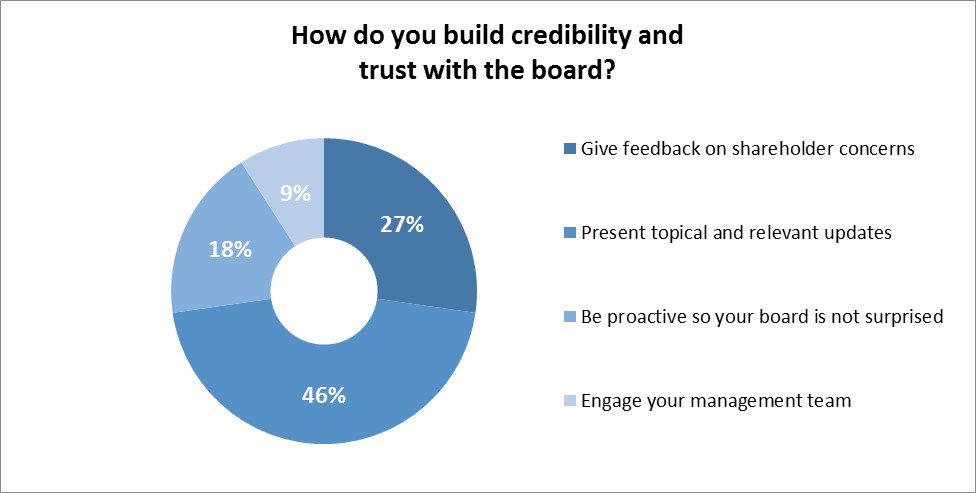Study on board-shareholder relations & IROs developing a strong relationship with the board
Jan 2016
As board-shareholder engagement becomes more prevalent, boards have developed an increasing need to be continually informed of Wall Street’s perspective and the drivers of the company’s valuation. The study, published by NMN Advisors, found that investor relations officers are adding significant value by assisting boards with key issues that may impact the company.
Study Objective
NMN Advisors conducted interviews with senior investor relations officers (IROs) on the topic of engagement between a company’s board of directors and their shareholders. The study gathered feedback on the following areas:
Communication protocols between shareholders and the board
Value of the IRO to the board
Type of information provided to the board
Building a relationship between the board and IRO
Key Findings
Building credibility and trust with the board involves acting proactively to keep the board well-informed of investor sentiment and key issues, ensuring that the board is not surprised. Most IROs believe that the board should be aware of shareholder concerns and requests, even when they may conflict with management’s perspective.
The most common time when boards interact with shareholders is during proxy season and activist situations.
IROs typically analyze every shareholder request prior to any board interaction and, if the request needs to be escalated, it typically involves other pre-determined members of the executive team - including legal and/or a senior executive.
IRO interaction and the materials that IROs provide to the board are at the discretion of the CEO and/or CFO.
Many companies provide investor relations materials to the board on a quarterly basis, around the earnings cycle.
To educate the board on issues and concerns, many companies provide a basic overview of the company’s shareholder base and key concerns. Many IROs also send quarterly background materials, such as shareholder reports, analyst notes, and a summary of current Wall Street feedback. If a perception study was recently completed, a high-level summary overview is also often included to provide a broad third-party perspective.
In preparation for proxy season, many companies are providing to the board customized reports on possible key issues and action plans as early as nine months prior to the shareholder meeting.
In addition to written materials, many IROs are also presenting to the board on an ongoing basis and share Wall Street’s perspective and sentiment on important issues that face the company and industry.

